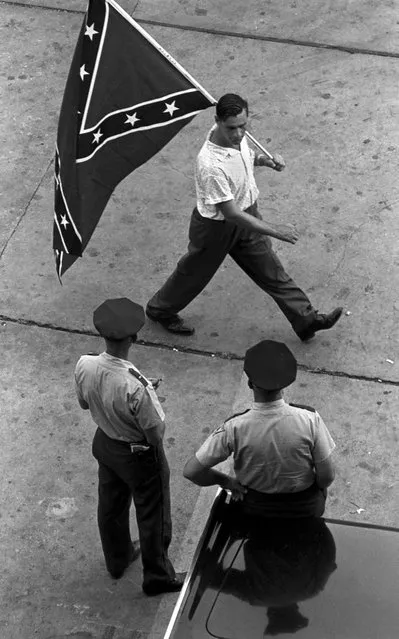
August, 1963 – A pro-segregation demonstrator takes to the streets during anti-Semitic demonstration in the summer of 1963. Some are especially active during the weeks leading up to the integration of Birmingham schools. (Photo by Vernon Merritt/The Birmingham News)
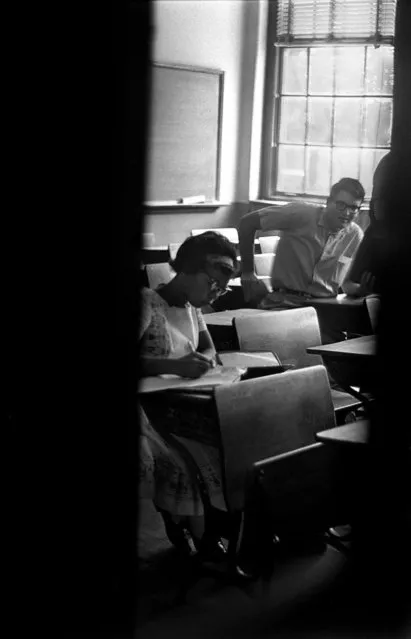
September 1963, Patricia Marcus, left, sits in a nearly abandoned classroom at West End High School in September 1963. Most of the school's student body boycotted Marcus' and Josephine Powell's integration of their school. (Photo by Robert Adams/The Birmingham News)
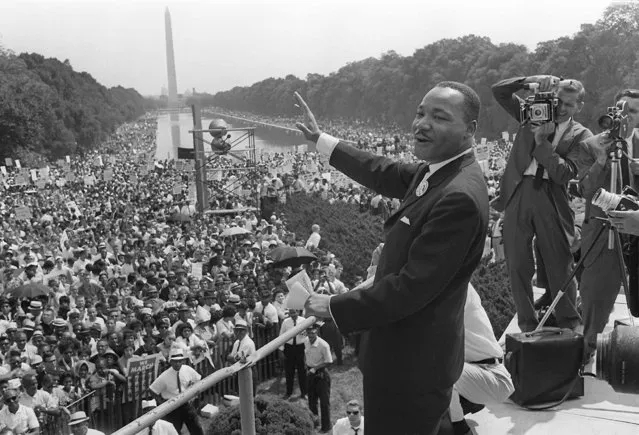
The civil rights leader Martin Luther KIng (C) waves to supporters 28 August 1963 on the Mall in Washington DC (Washington Monument in background) during the “March on Washington”. King said the march was “the greatest demonstration of freedom in the history of the United States”. Martin Luther King was assassinated on 04 April 1968 in Memphis, Tennessee. James Earl Ray confessed to shooting King and was sentenced to 99 years in prison. King's killing sent shock waves through American society at the time, and is still regarded as a landmark event in recent US history. (Photo by AFP Photo)
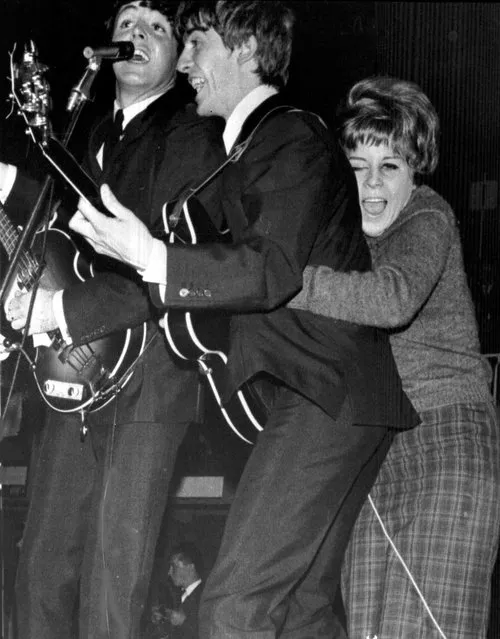
A young Swedish fan hugs George Harrison as The Beatles play at a pop festival in Stockholm, Sweden, on October 26, 1963. Paul McCartney, left, sings with Harrison. (Photo by AP Photo)
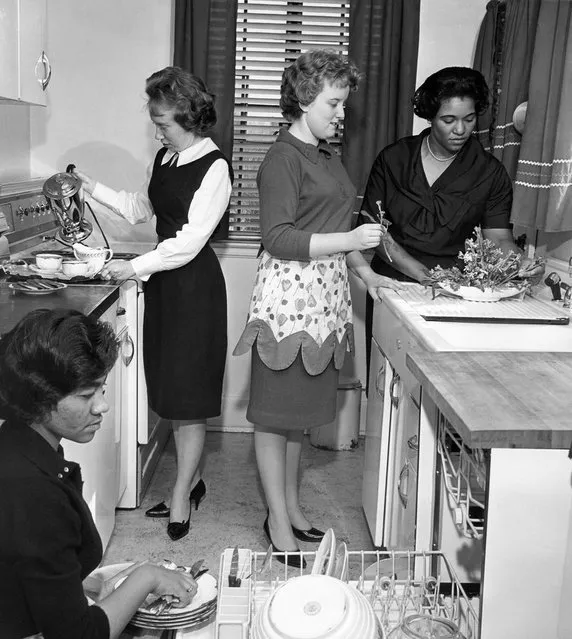
In this March 1963 file photo, black and white students participate in a home economics class at West Virginia State College at Institute, W.Va. The school, one of a number in which reverse integration is taking place, has changed from a predominantly African-American college to one with 65-to-70 per cent white students in its student body of 2,502. (Photo by AFP Photo)
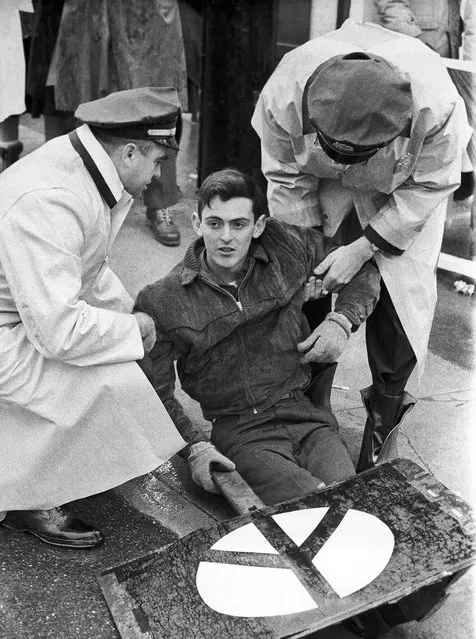
In this January 12, 1963 file photo, demonstrator Michael Kirby, 25, of Milton, Mass., carrying a peace sign, is taken into custody by police in Groton, Conn., outside the launching site of the Polaris nuclear missile submarine USS Nathan Hale. Kirby, a former nuclear weapons specialist in the Navy, was one two pacifists arrested at the site. (Photo by AFP Photo)
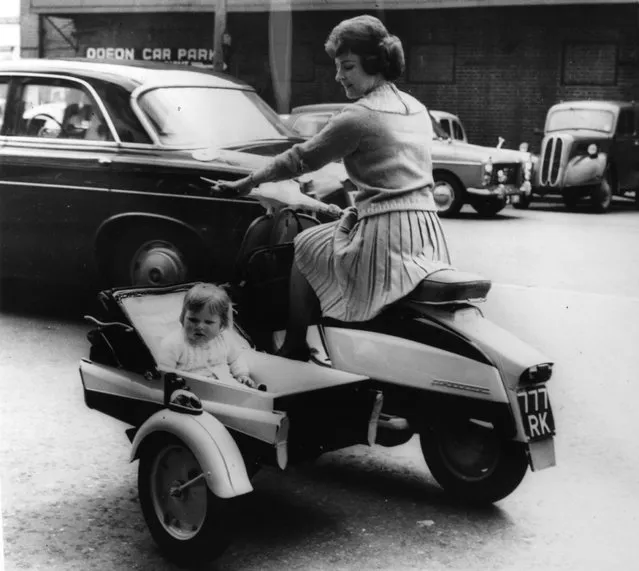
A new design from the makers of Lambretta Scooters, 9th May 1963. Anita White of Teddington rides a power-driven pram with her daughter, Anita. (Photo by Keystone)
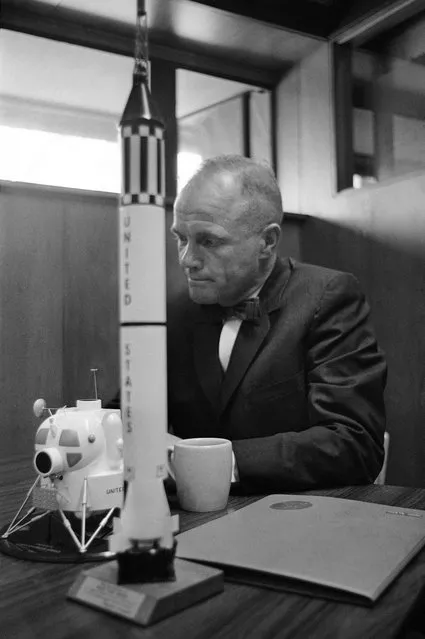
In this February 8, 1963 file photo, astronaut John Glenn sits with models of the Mercury spacecraft atop its launch rocket and a lunar module, representing the past and the future of space exploration as he talks about the first anniversary of his historic flight. (Photo by AFP Photo)
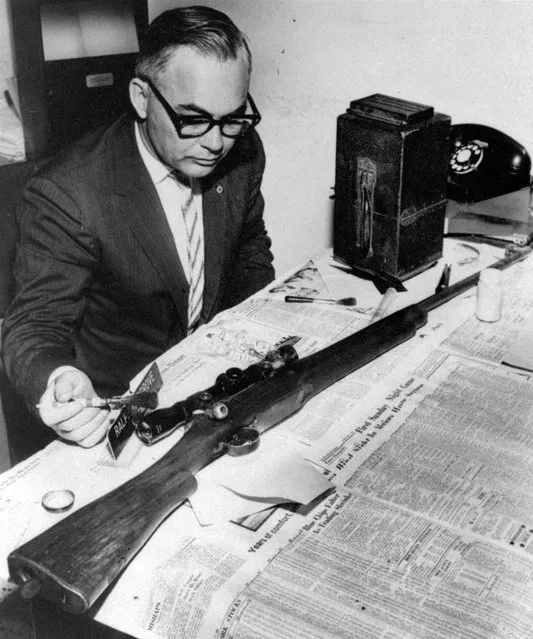
In this June 12, 1963 file photo, Jackson Police Capt. Ralph Hargrove, chief of the Identification Bureau, poses with .30 caliber rifle which police say was used to kill Medgar Evers. Evers was field secretary for the NAACP and was shot at his Jackson, Miss. home. The weapon was found in some weeds nearby. (Photo by AFP Photo)
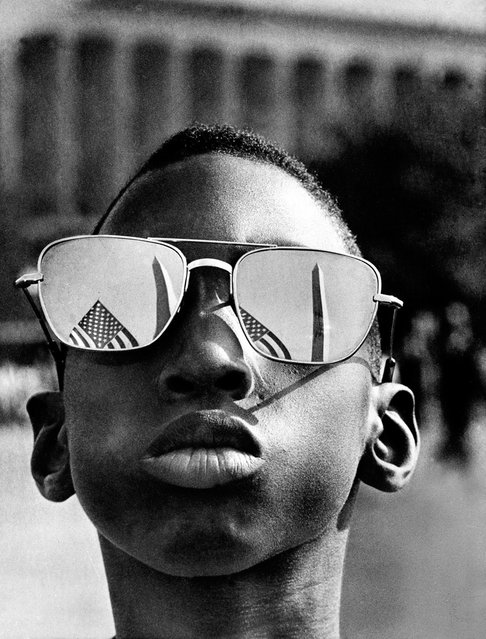
In this August 28, 1963 file photo, the top of the Washington Monument and part of a U.S. flag are reflected in the sunglasses of Austin Clinton Brown, 9, of Gainesville, Ga., as he poses at the Capitol where he joins others in the March on Washington. (Photo by AFP Photo)
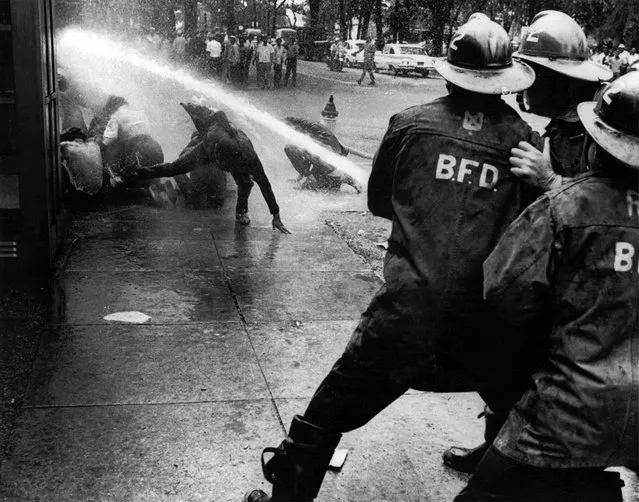
Firefighters turn their hoses full force on civil rights demonstrators in Birmingham, Alabama, on July 15, 1963. (Photo by Bill Hudson/AP Photo)
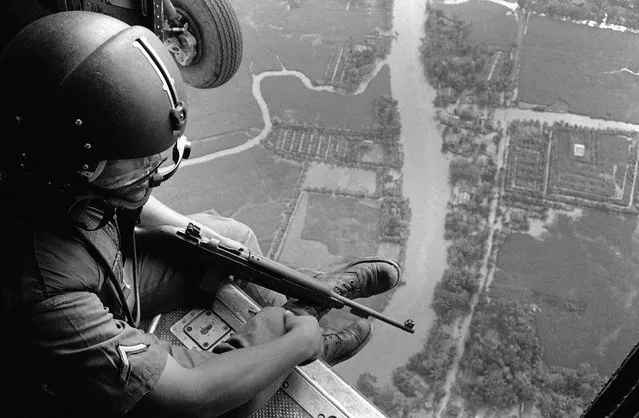
A Helmeted U.S. Helicopter Crewchief watches ground movements of Vietnamese troops from above during a strike against Viet Cong Guerrillas in the Mekong Delta Area, on January 2, 1963. The communist Viet Cong claimed victory in the continuing struggle in Vietnam after they shot down five U.S. helicopters. An American officer was killed and three other American servicemen were injured in the action. By 1963, nearly 16,000 American military personnel were deployed in South Vietnam. (Photo by AP Photo)
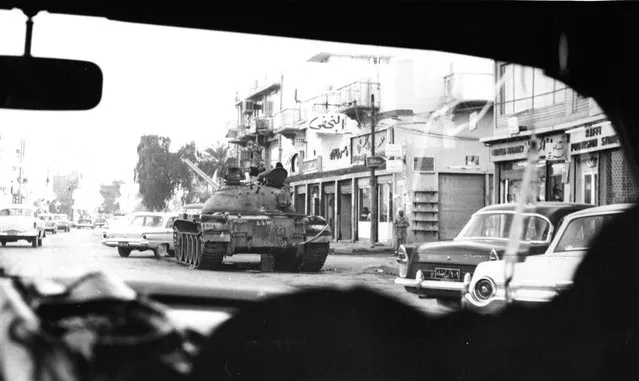
A motorist's view of a street in Baghdad, Iraq, on February 12, 1963, where tanks stand by to prevent further outbreaks of fighting which followed a military coup and overthrow of Premier Abdel Karim Kassem's five-year-old regime by elements of the Ba'ath Party. (Photo by Jim Pringle/AP Photo)
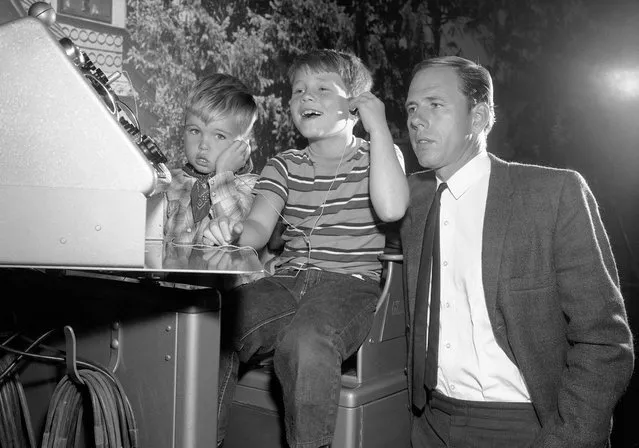
Ronny Howard, center, who plays Opie on “The Andy Griffith Show”, is joined by his real-life father Rance Howard and little brother Clint in an episode of the show, marking the first time that all three Howards had worked in a TV show together, in 1963. (Photo by AP Photo)
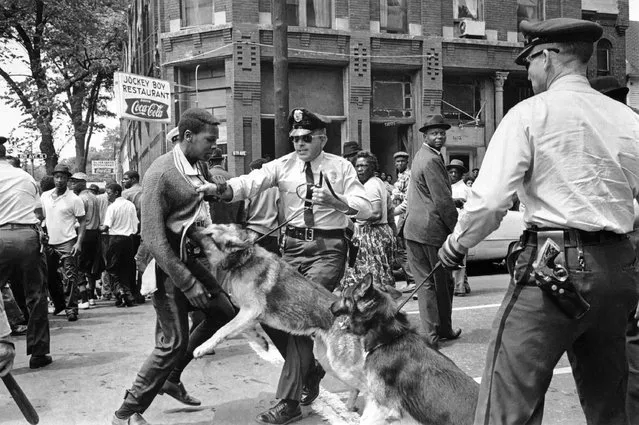
A 17-year-old civil rights demonstrator, defying an anti-parade ordinance in Birmingham, Alabama, is attacked by a police dog on May 3, 1963. On the afternoon of May 4, 1963, during a meeting at the White House with members of a political group, President Kennedy discussed this photo, which had appeared on the front page of that day's New York Times. (Photo by Bill Hudson/AP Photo)
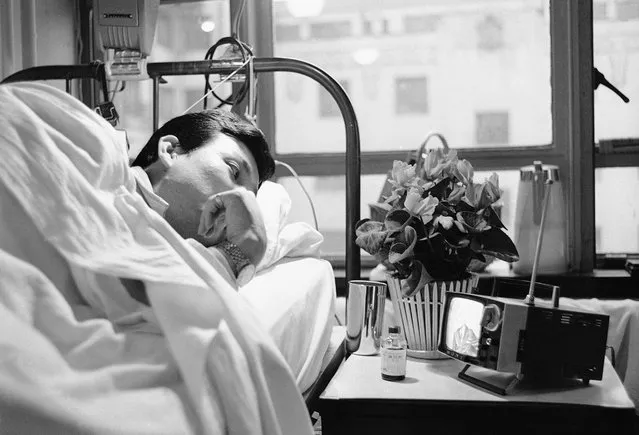
The use of small, portable TV sets in the U.S. had not quite caught on in 1963, but in Japan, where they were first developed, viewers were hooked on the miniaturized video machine. Owners of the sets, such as this patient in a Tokyo hospital, took them with them wherever they went. (Photo by Hideyuki Mihashi/AP Photo)
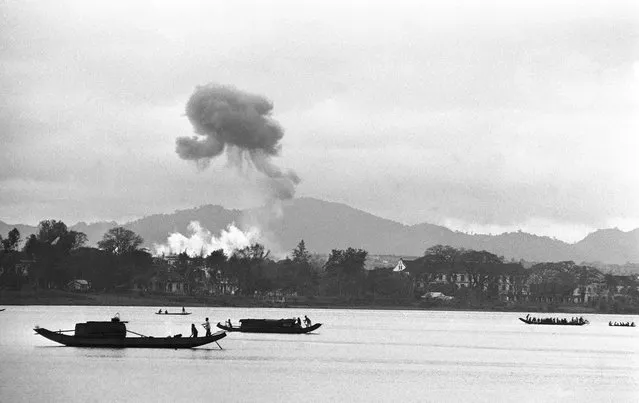
Napalm air strikes raise clouds of smoke into gray monsoon skies as houseboats glide down the Perfume River toward Hue in Vietnam, on February 28, 1963, where the battle for control of the old Imperial City has ended with a Communist defeat. Firebombs were directed against a village on the outskirts of Hue. (Photo by AP Photo)
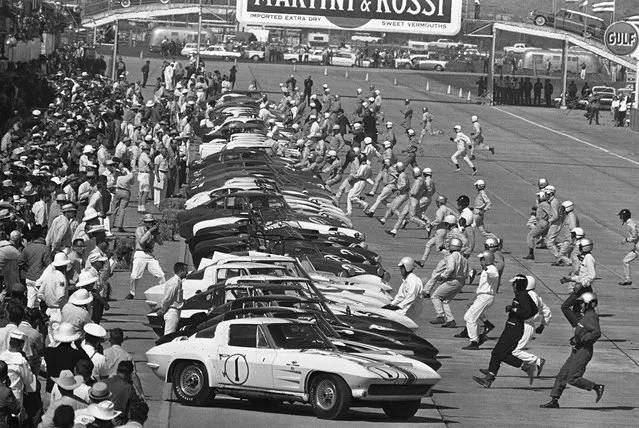
Sixty five drivers run for their cars at start of International 12-hour endurance race at Sebring, Florida, on March 23, 1963. (Photo by James P.Kerlin/AP Photo)
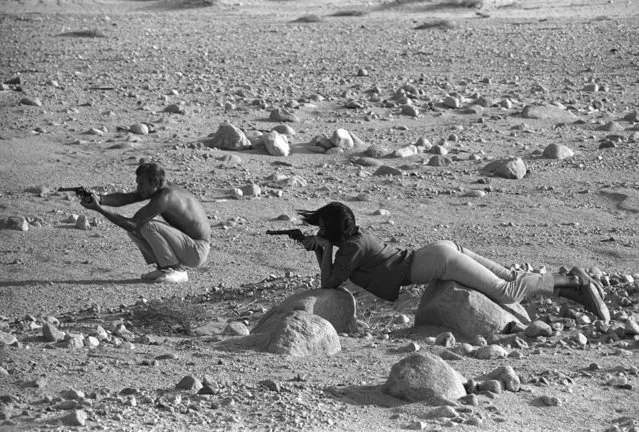
American actor “The King of Cool” Steve McQueen and Neile Adams, his first wife, target-practice with their pistols in the Palm Springs desert in 1963. (Photo by John Dominis/Life)
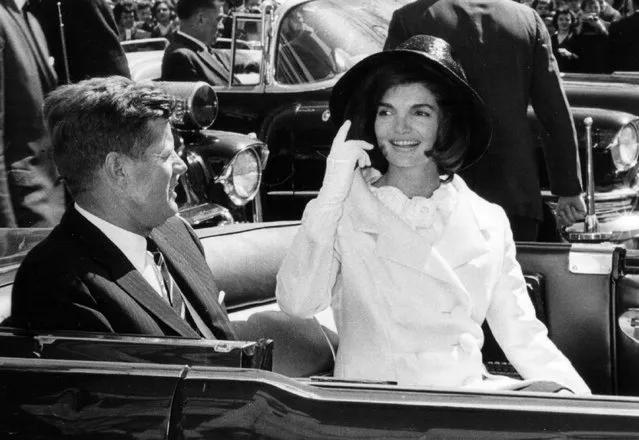
President John F. Kennedy and First Lady Jacqueline Kennedy ride in a parade March 27, 1963 in Washington, DC. (Photo by National Archive/Newsmakers)
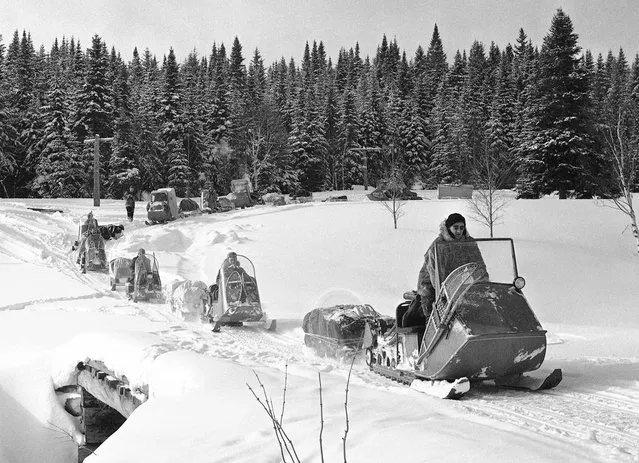
Powered sledges break a trail through Maine's primitive Allagash Forest, on March 5, 1963. Twenty men, led by an expert on Arctic equipment, made an extended trip through the forest to test equipment. Robert Faylor, director of the Arctic Institute of North America, led the group. The sledges, called Polaris vehicles, are powered with engines about the size of an outboard motor and travel up to 8 or 10 miles an hour, depending on snow conditions. (Photo by Dan Grossi/AP Photo)
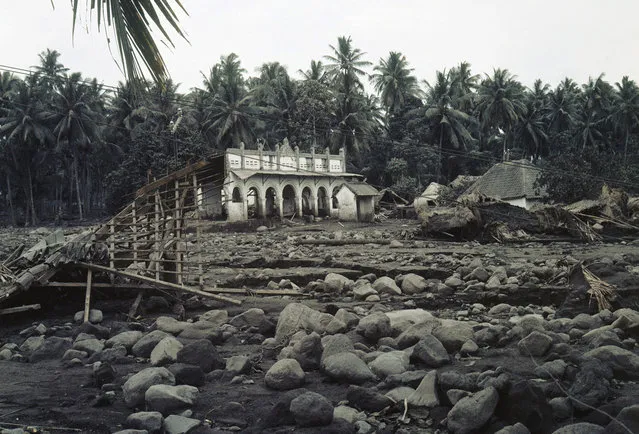
After the eruption of Mount Agung in Bali, on March 26, 1963, most of the cabins have been destroyed in this village. On March 17, the volcano erupted, sending debris into the air and generating massive pyroclastic flows. These flows devastated numerous villages, killing approximately 1,500 people. (Photo by AP Photo)
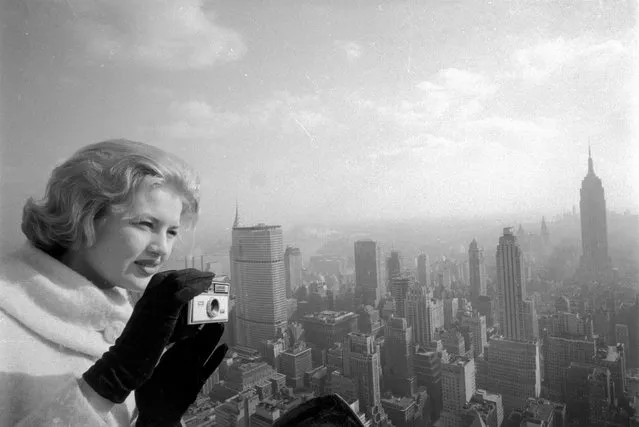
Diane Sawyer, 17, America's Junior Miss of 1963, takes a few snapshots of New York's skyline on March 18, 1963. (Photo by AP Photo)

Admiral Richard Byrd's “Little America III” station, built in Antarctic in 1940, was spotted by a Navy icebreaker sticking out of the side of this floating iceberg in the Antarctic's Ross Sea, on March 13, 1963. The old outpost was buried beneath 25 feet of snow, 300 miles away from its original location. A helicopter pilot flew in close and reported cans and supplies still stacked neatly on shelves. (Photo by AP Photo/Official U.S. Navy Photo)
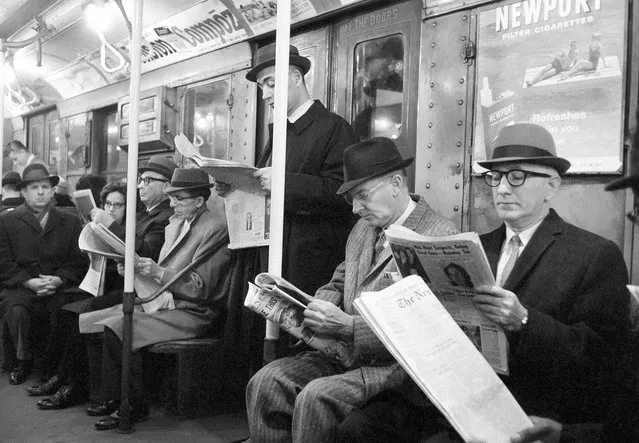
Riders read their morning newspapers on New York's subway en route to work, on April 1, 1963 after the end of the city's 114-day newspaper strike. (Photo by Jacob Harris/AP Photo)
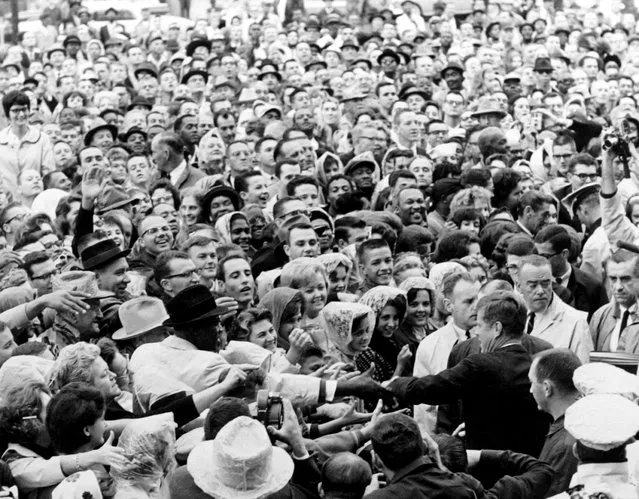
President John F. Kennedy greets a crowd at a political rally in Fort Worth, Texas in this November 22, 1963 photo by White House photographer Cecil Stoughton. (Photo by Cecil Stoughton/Reuters/JFK Library/The White House)
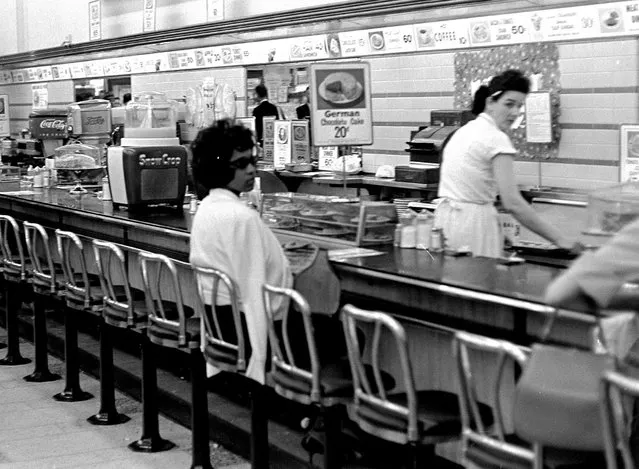
Black college student Dorothy Bell, 19, of Birmingham, Alabama, waits at a downtown Birmingham lunch counter for service that never came, April 4, 1963. She was later arrested with 20 others in sit-in attempts. (Photo by AP Photo)
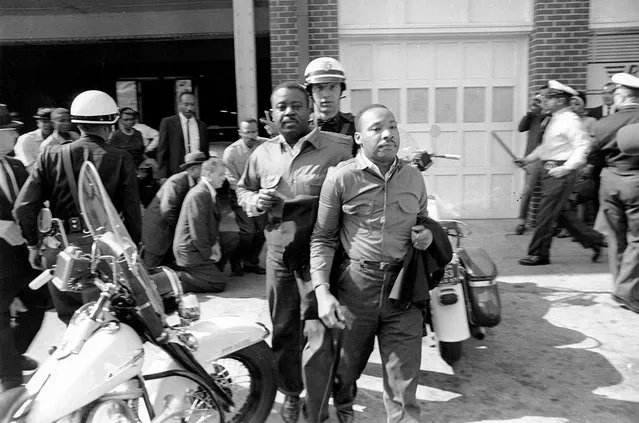
Rev. Ralph Abernathy, left, and Rev. Martin Luther King Jr., are removed by a policeman as they led a line of demonstrators into the business section of Birmingham, Alabama, on April 12, 1963. (Photo by AP Photo)
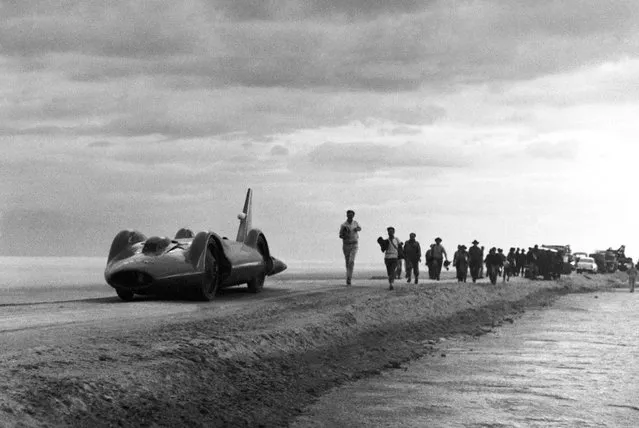
Bluebird, the 5,000 horsepower car in which Donald Campbell hopes to break the world land speed record, pictured during its first run, with Campbell at the controls, during preliminary tests on the specially prepared track at Lake Eyre, South Australia on May 2, 1963. Torrential rains flooded the lake, postponing his run until the following year, when he set a record of 403.10 mph (648.73 km/h). (Photo by AP Photo/HO)
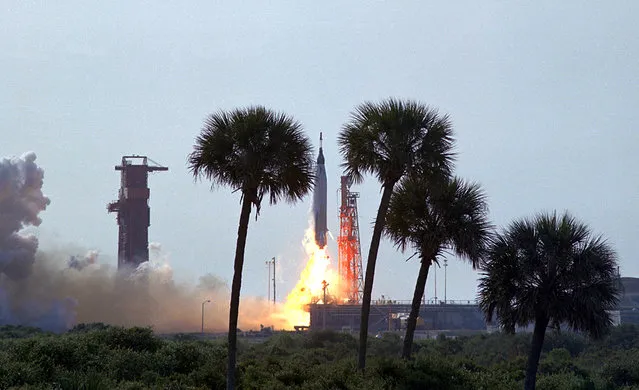
The launch of the Mercury Atlas 9 rocket with astronaut Gordon Cooper on board from Launch Pad 14 at Cape Canaveral, Florida, on May 5, 1963. Mercury Atlas 9 was the final manned space mission of the U.S. Mercury program, successfully completing 22 Earth orbits before splashing down in the Pacific Ocean. (Photo by NASA)
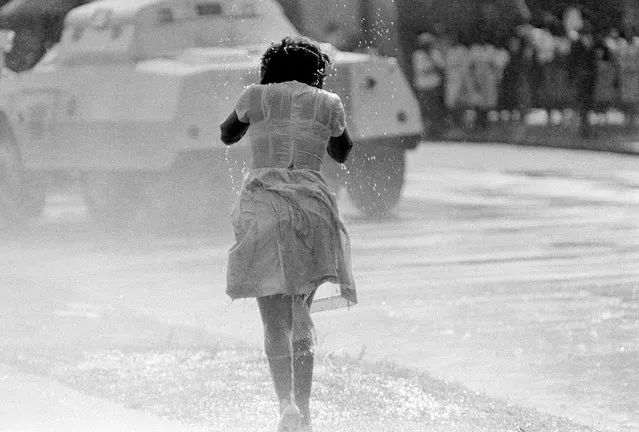
A young black woman, soaked by a fireman's hose as an anti-segregation march is broken up by police, in Birmingham, Alabama, on May 8, 1963. In the background is a police riot wagon. (Photo by AP Photo)
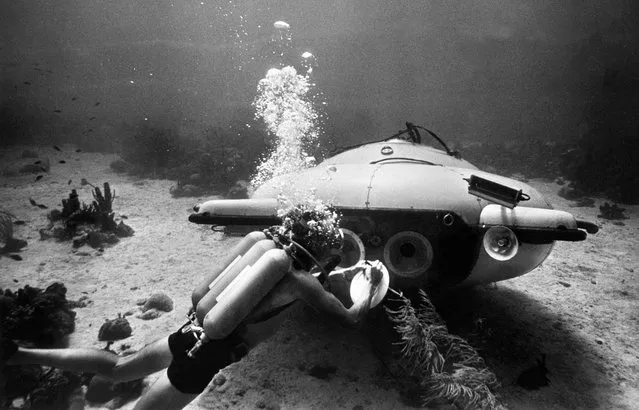
French explorer and oceanographer Jacques-Yves Cousteau near his “diving saucer” during an undersea exploration in the Red Sea, in June of 1963. Together with Jean Mollard, he created the SP-350, a two-man submarine that could reach a depth of 350 m below the ocean's surface. (Photo by OFF/AFP Photo)
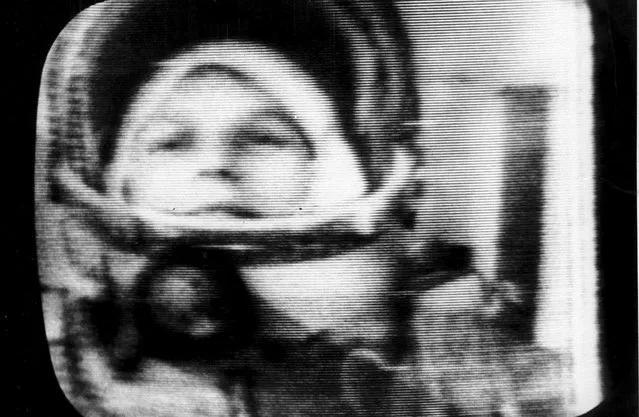
26-year-old Valentina Tereshkova, who became the first woman to travel in space, as seen in a television transmission from her spacecraft, Vostok 6, on June 16, 1963. (Photo by AP Photo/TASS)
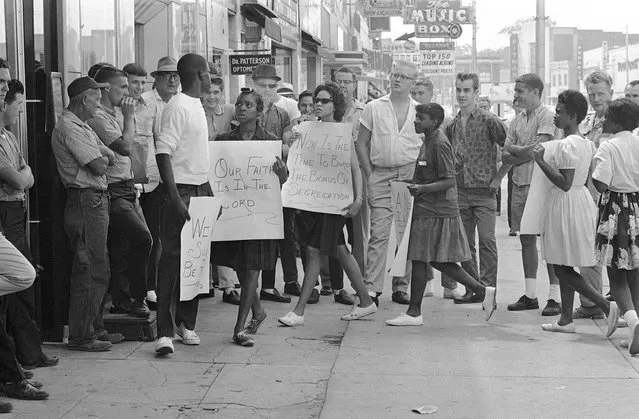
A picketer in front of a Gadsden, Alabama, drugstore turns to answer a heckler during a demonstration, on June 10, 1963. About two dozen black youths picketed several stores and two theaters. There were no arrests and no violence. (Photo by AP Photo)
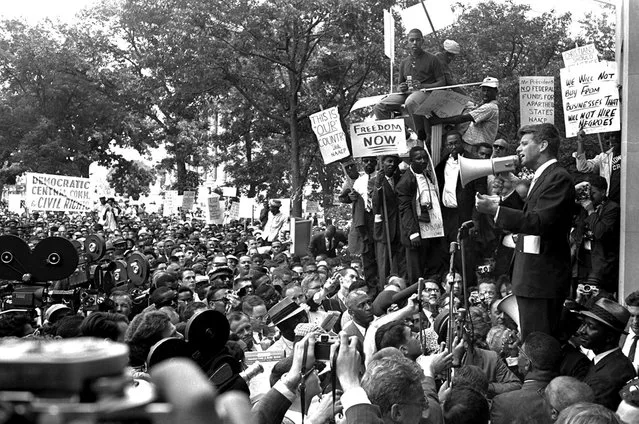
Attorney General Robert Kennedy uses a bullhorn to address black demonstrators at the Justice Department, on June 14, 1963. The demonstrators marched to the White House, then to the District Building, and wound up at the Justice Department. (Photo by AP Photo/STF)
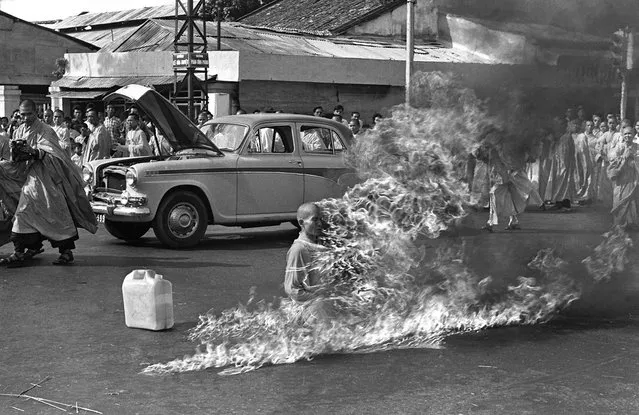
Thich Quang Duc, a Buddhist monk, burns himself to death on a Saigon street to protest alleged persecution of Buddhists by the South Vietnamese government, on June 11, 1963. (Photo by Malcolm Browne/AP Photo)
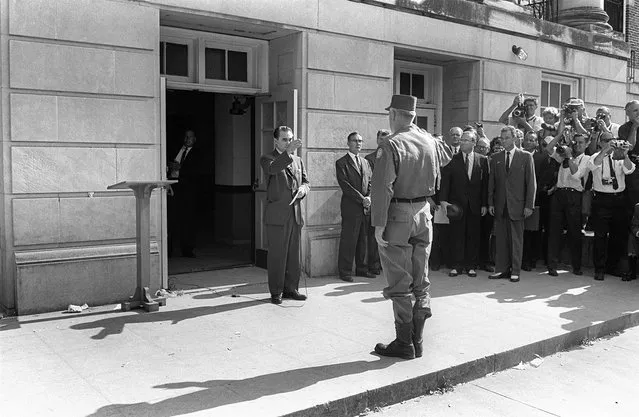
Alabama's governor George Wallace (left) faces General Henry Graham, in Tuscaloosa, at the University of Alabama, on June 12, 1963. Wallace blocked the enrollment of two African-American students, Vivian Malone and James Hood. Despite an order of the federal court, Governor George Wallace appointed himself the temporary University registrar and stood in the doorway of the administration building to prevent the students from registering. In response, President Kennedy federalized the Alabama National Guard. One hundred guardsman escorted the students to campus and their commander, General Henry Graham, ordered George Wallace to “step aside”. Thus were the students registered. Kennedy addressed the public in a June 11 speech that cleared his position on civil rights. The bill that he submitted to Congress was ultimately passed as the Civil Rights Act of 1964. (Photo by OFF/AFP Photo)
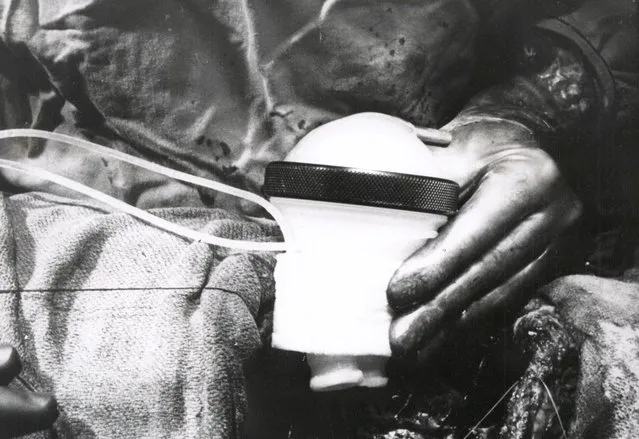
Dr. Michael Debakey installs an artificial pump to assist a patient's damaged heart in Houston, on July 19, 1963. (Photo by AFP Photo)
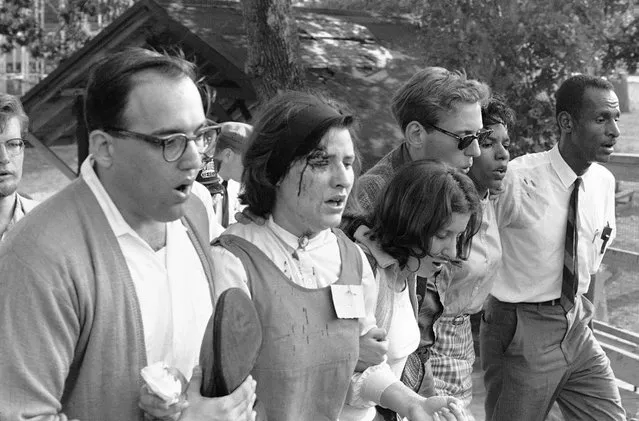
Allison Turaj, 25, of Washington, D.C., blood running down her cheek, was cut over her right eye by a thrown rock in a mass demonstration at a privately owned, segregated amusement park in suburban Woodlawn in Baltimore, on July 7, 1963. (Photo by AP Photo)
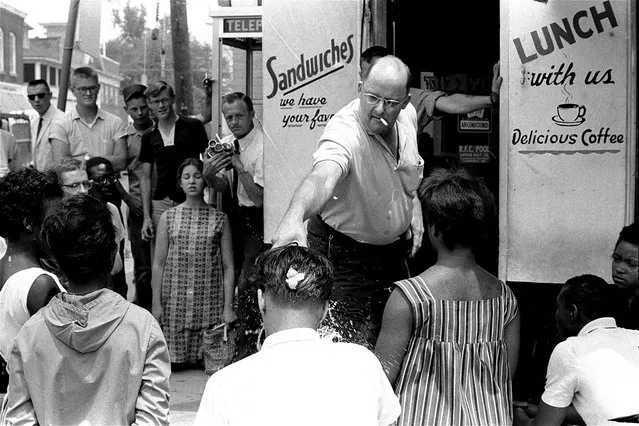
Robert Fahsenfeldt, owner of a segregated lunchroom in the racially tense Eastern Shore community of Cambridge, Maryland, douses a white integrationist with water, on July 8, 1963. The integrationist, Edward Dickerson, was among three white and eight African American protesters who knelt on the sidewalk in front of the restaurant to sing freedom songs. A raw egg, which Fahsenfeldt had broken over Dickerson's head moments earlier, still is visible on the back of Dickerson's head. The protesters were later arrested. (Photo by William A. Smith/AP Photo)
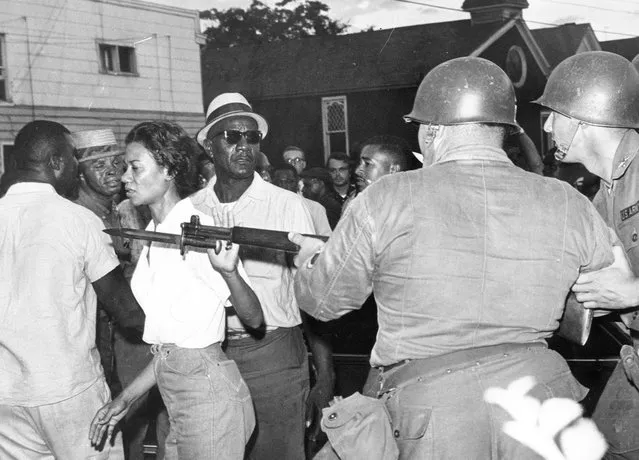
Mrs. Gloria Richardson, head of the Cambridge Nonviolent Action Committee, pushes a National Guardsman's bayonet aside as she moves among a crowd of African Americans to convince them to disperse, in Cambridge, Maryland, on July 21, 1963. (Photo by AP Photo)
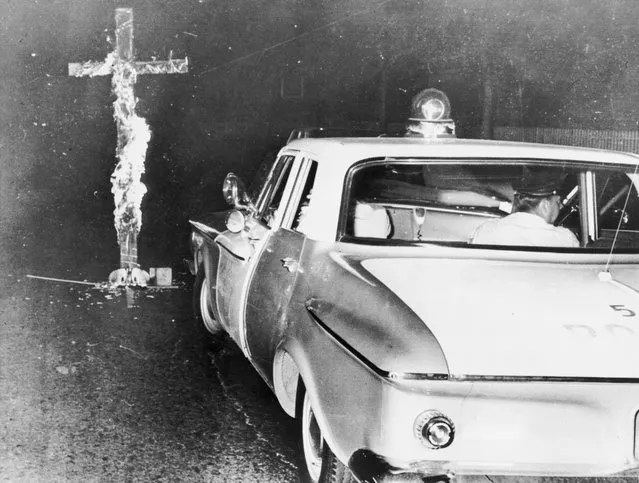
Chicago police move in to knock down a burning cross in front of a home, after an African-American family moved into a previously all white neighborhood, on the 6th consecutive night of disturbances, on August 3, 1963. (Photo by Library of Congress)
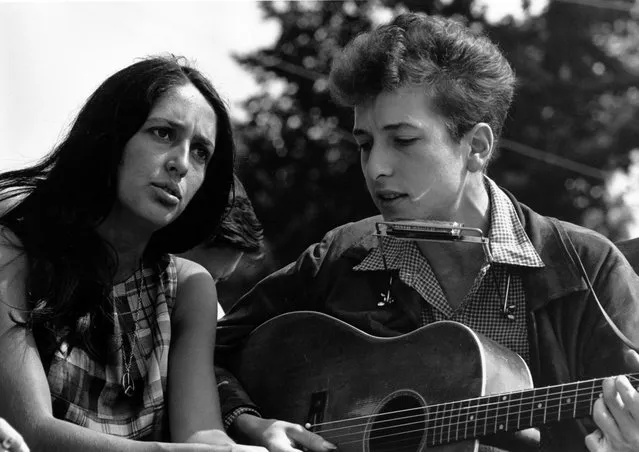
Folk singers Joan Baez and Bob Dylan perform during a civil rights rally on August 28, 1963 in Washington D.C. (Photo by Rowland Scherman/National Archive/Newsmakers)
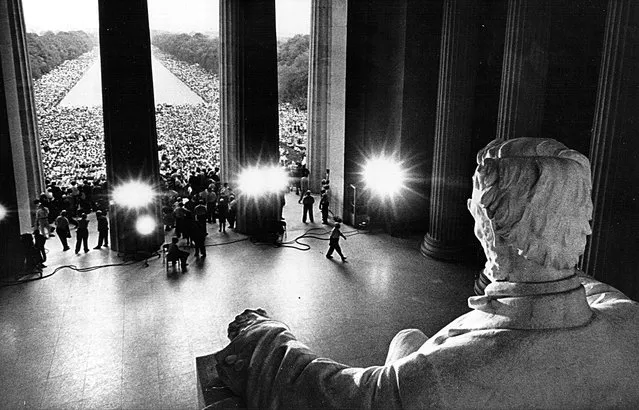
The statue of Abraham Lincoln is illuminated during a civil rights rally, on August 28, 1963 in Washington, D.C. (Photo by National Archive/Newsmakers)
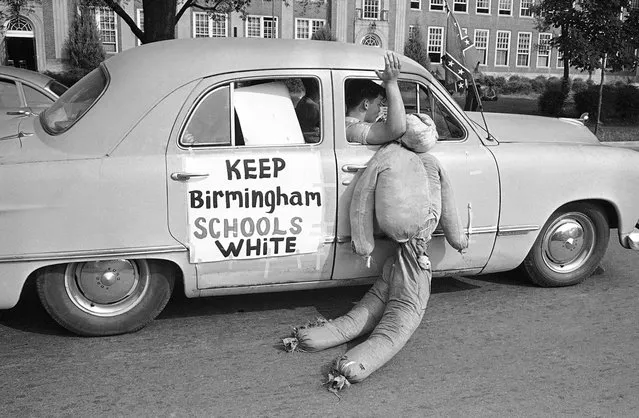
White students in Birmingham, Alabama, drag an African American effigy past West End High School, on September 12, 1963. Two African American girls attended the desegregated school and a majority of the white students were staying away from classes. Police stopped this car in a segregationist caravan in front of the school to caution them about fast driving and blowing auto horns in front of a school. (Photo by AP Photo)
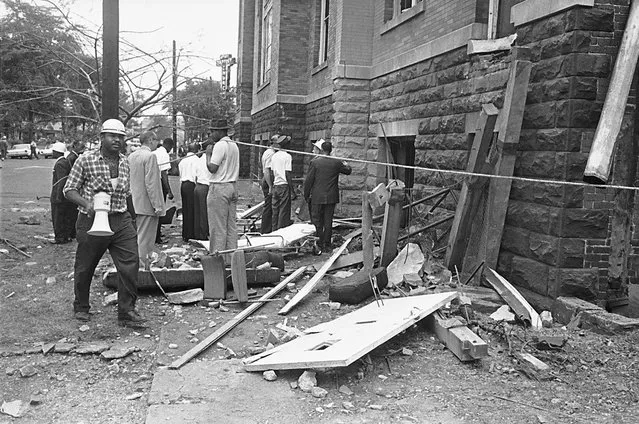
A civil defense worker and firemen walk through debris from an explosion which struck the 16th street Baptist Church, killing four girls and injuring 22 others, in Birmingham, Alabama, on September 15, 1963. The open doorway at right is where the girls are believed to have died. The horrific attack rallied public support to the cause of civil rights. Four men, members a Ku Klux Klan group, were responsible for planting a box of dynamite under the steps of the church. Three of the four were eventually tried and convicted. (Photo by AP Photo)
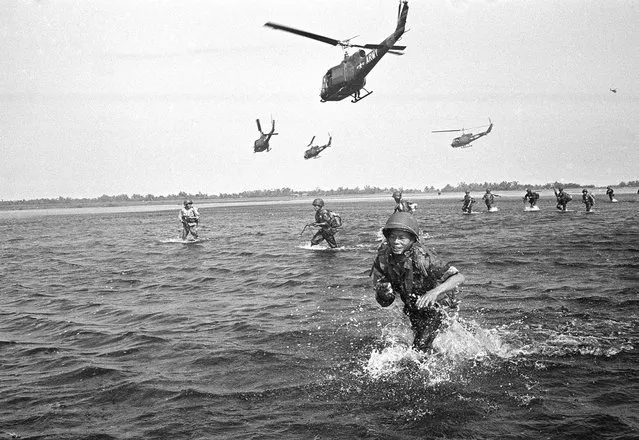
One trooper sprawls in the flooded swamp as other Vietnamese Government Soldiers walk through the water after landing from U.S. army Helicopters near CA Mau Peninsula in South Vietnam on September 15, 1963. The Soldiers were landed to pursue communist Viet Cong Guerrillas who had attacked a Vietnamese outpost. (Photo by Horst Faas/AP Photo)
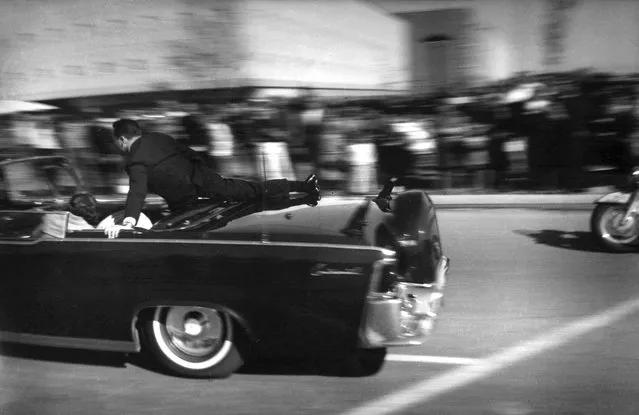
At 12:30 pm, just seconds after President John F. Kennedy and Texas Governor John Connally were shot in Dallas, Texas, the limousine carrying mortally wounded president races toward the hospital, on November 22, 1963. With secret service agent Clinton Hill riding on the back of the car, Mrs. John Connally, wife of the Texas governor, bends over her wounded husband, and Mrs. Kennedy leans over the president. (Photo by Justin Newman/AP Photo)
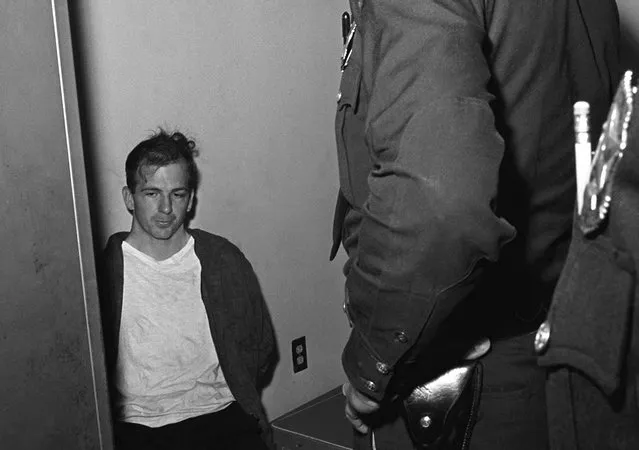
Lee Harvey Oswald sits in police custody shortly after being arrested for the assassination President John F. Kennedy, and the murder of Dallas police officer J. D. Tippit, in Dallas, Texas, on November 22, 1963. (Photo by AP Photo)
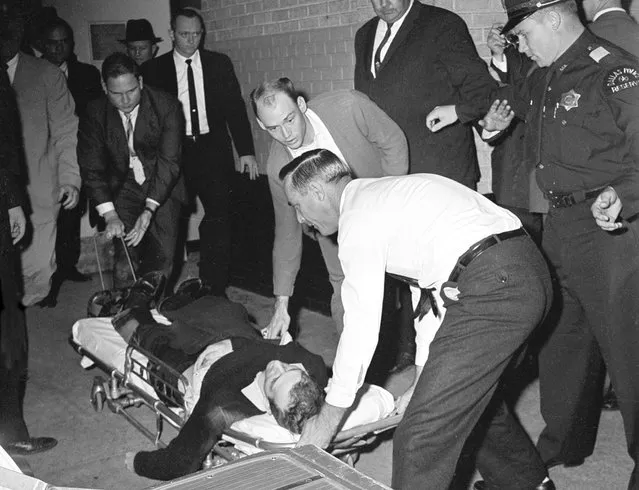
Lee Harvey Oswald, accused assassin of President John F. Kennedy, is placed on a stretcher after moments after being shot in the stomach in Dallas, Texas, on November 24, 1963. Nightclub owner Jack Ruby shot and killed Oswald as the prisoner was being transferred through the underground garage of Dallas police headquarters. (Photo by AP Photo)
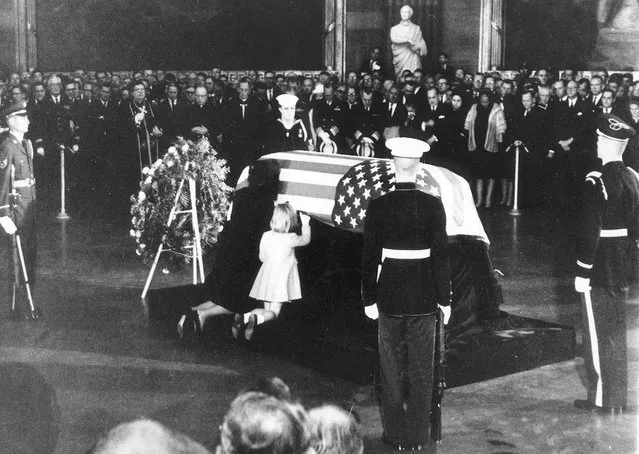
Jackie Kennedy kisses the casket of her late husband, President John F. Kennedy while her daughter Caroline touches it in rotunda of U.S. Capitol, on November 24, 1963. (Photo by AP Photo)
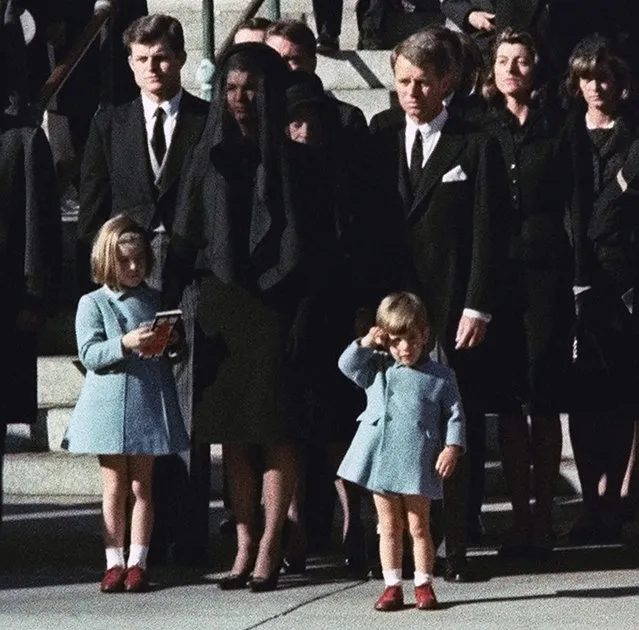
Three-year-old John F. Kennedy Jr. salutes his father's casket in Washington in this November 25, 1963 photo, three days after the president was assassinated in Dallas. Widow Jacqueline Kennedy, center, and daughter Caroline Kennedy are accompanied by the late president's brothers Senator Edward Kennedy, left, and Attorney General Robert Kennedy. (Photo by AP Photo)
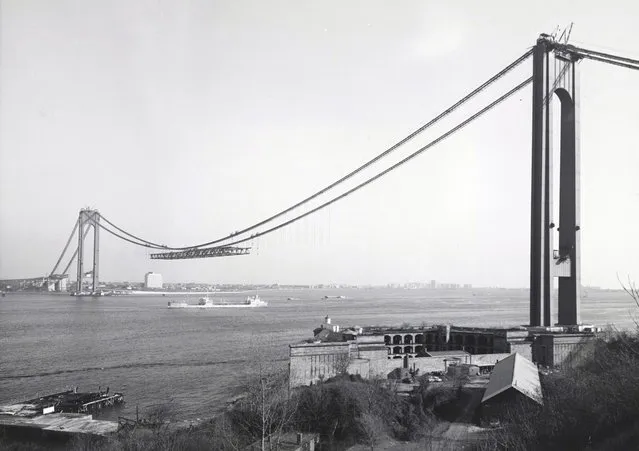
New York's Verrazano-Narrows Bridge, linking Brooklyn to Staten Island, under construction, on December 4, 1963. The bridge, with a span of 4,260 feet, opened to traffic on November 21, 1964. (Photo by AP Photo/Museum of the City of New York)
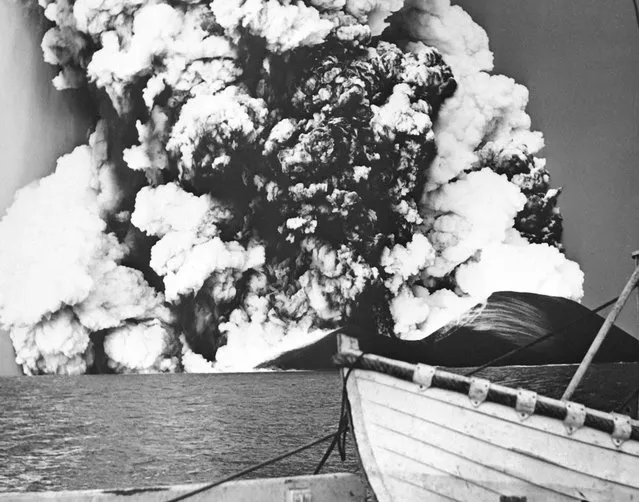
Picture released on December 2, 1963 of the formation of Surtsey, a new volcanic island off the southern coast of Iceland forged from volcanic eruptions. (Photo by AFP Photo)
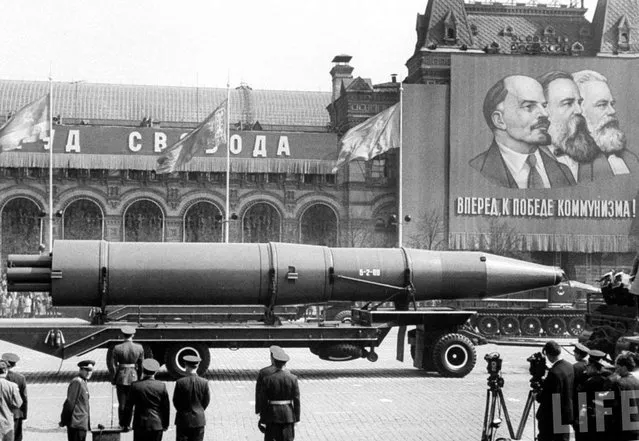
In this May 1, 1963 file photo, a Naval rocket is exhibited in Moscow's Red Square past a banner of Vladimir Lenin, Friedrich Engels and Karl Marx during the annual May Day parade in the Soviet Union. Under the shadow of the Cold War's threat of 'mutually assured destruction, 1963 was the year of dawning arms control between the U.S. and the Soviet Union; they signed a Nuclear Test Ban Treaty. (Photo by AFP Photo/Life)
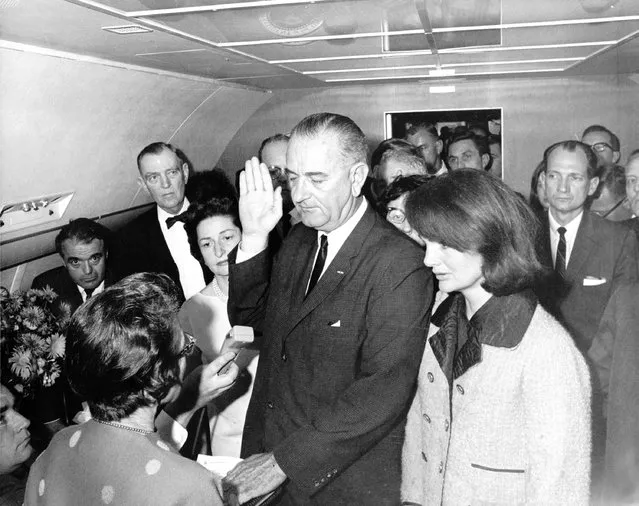
Flanked by Jacqueline Kennedy (right) and his wife Lady Bird Johnson (2nd left), U.S Vice President Lyndon Johnson is administered the oath of office by Federal Judge Sarah Hughes, as he assumed the presidency of the United States, on November 22, 1963, following the assassination of President John F. Kennedy in Dallas (Photo by Cecil Stoughton/AFP Photo)
18 Feb 2013 13:26:00,
post received
0 comments
